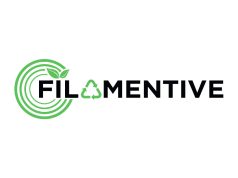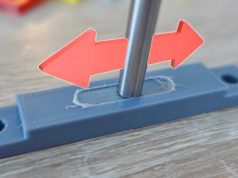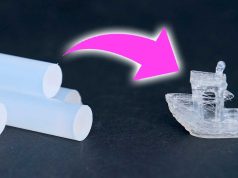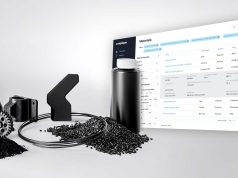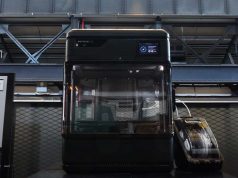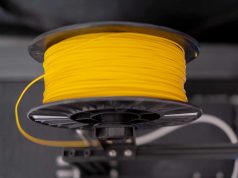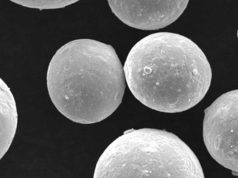A new high-performance polymer with exceptional heat resistance is ideally suited for ultra-precise 2-photon polymerization (2PP) 3D printing. This will enable micro-3D printing to meet the specific requirements of the electrical industry for the first time. This breakthrough in the 3D printing industry is made possible by a successful collaboration between two high-tech companies, Cubicure and UpNano. The jointly developed material „UpThermo powered by Cubicure“ is available now. It will be exhibited at Formnext in Frankfurt, Germany in November 2022.
Ultra-precise 2PP 3D printing requires special starting materials. However, until now, these have not allowed the production of temperature-resistant components with the stability needed, for example, in the electrical industry or for the production of micro-injection molds. With the UpThermo material powered by Cubicure, a heat-resistant high-performance polymer is now available for the first time that is suitable for 2PP 3D printing.
Top Value in Heat Resistance
The UpThermo material, which is available immediately, is stable up to 300 degrees Celsius (HDT-B, the test specimens were printed with a length of 35 mm). This unprecedented value for a 2PP 3D printable material allows it to be used wherever higher temperatures prevail and maximum precision is required. Components for the electrical industry, for example, are one of the possible areas of application for the material.
The prerequisite for this innovation was the hot lithography technology developed and patented by Cubicure GmbH. This allows the processing of highly viscous materials in precision 3D printing and thus creates components with unimagined material quality.
Dr. Robert Gmeiner, CEO of Cubicure, comments: “Hot Lithography opens up a wider process window – also for light-polymerizing micro 3D printing. With our technology, polymers can be tailored to their application purpose and high-temperature-resistant components can also be produced. That was the basis of our collaboration with UpNano.”
UpNano GmbH produces the NanoOne series of 2PP 3D printers, currently the fastest and most precise printers of their kind, which have their field of application in industry as well as in research. The ability to print structures with nanometer resolution as well as in centimeter sizes makes the series extremely desirable and successful. Although the printers’ applications already include electronics in addition to micro-optics and biocompatible applications in cell and medical research, the use of 2PP 3D printing in this industry has been limited by the lack of heat resistance of the printable materials. The increase of that has now been achieved in collaboration with Cubicure. The company already successfully offers an extensive portfolio of performance materials: Precision materials, high-temperature materials with good fire resistance, impact-resistant photopolymers, and elastomer-type materials that are widely used in industry.
Material Matters
The joint material development of Cubicure and UpNano now makes it possible to combine the advantages of hot lithography with the precision of 2PP 3D printing. This allows the scope of micro 3D printing to be extended to new areas. Existing NanoOne 3D printers can also be retrofitted with Hot Lithography technology to produce a wider variety of components. Once again, UpNano is leading the pack when it comes to opening up new application areas for 2PP 3D printing with new materials. The company has already demonstrated its expertise in materials development in the past with the introduction of the industry’s first black material (UpBlack), an optically translucent material (UpOpto), and one suitable for printing with living cells (X Hydrobio INX).
Find out more aobut UpNano at upnano.at.
For more information about Cubicure at cubicure.com.
Subscribe to our Newsletter
3DPResso is a weekly newsletter that links to the most exciting global stories from the 3D printing and additive manufacturing industry.





